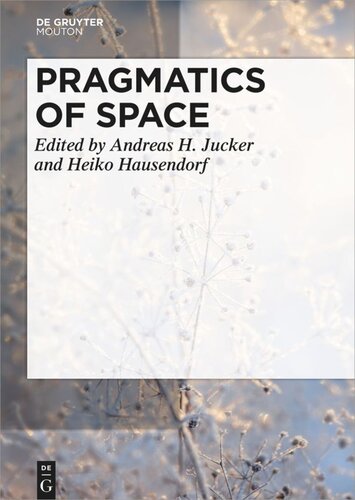

Most ebook files are in PDF format, so you can easily read them using various software such as Foxit Reader or directly on the Google Chrome browser.
Some ebook files are released by publishers in other formats such as .awz, .mobi, .epub, .fb2, etc. You may need to install specific software to read these formats on mobile/PC, such as Calibre.
Please read the tutorial at this link: https://ebookbell.com/faq
We offer FREE conversion to the popular formats you request; however, this may take some time. Therefore, right after payment, please email us, and we will try to provide the service as quickly as possible.
For some exceptional file formats or broken links (if any), please refrain from opening any disputes. Instead, email us first, and we will try to assist within a maximum of 6 hours.
EbookBell Team

5.0
68 reviewsThis handbook provides a comprehensive overview of spatial configurations of language use and of language use in space. It consists of four parts. The first part covers the various practices of describing space through language, including spatial references in spoken interaction or in written texts, the description of motion events as well as the creation of imaginative spaces in storytelling. The second part surveys aspects of the spatial organization of face-to-face communication including not only spatial arrangements of small groups in interaction but also the spatial dimension of sign language and gestures. The third part is devoted to the communicative resources of constructed spaces and the ways in which these facilitate and shape communication. Part four, finally, is devoted to pragmatics across space and cultures, i.e. the ways in which language use differs across language varieties, languages and cultures.